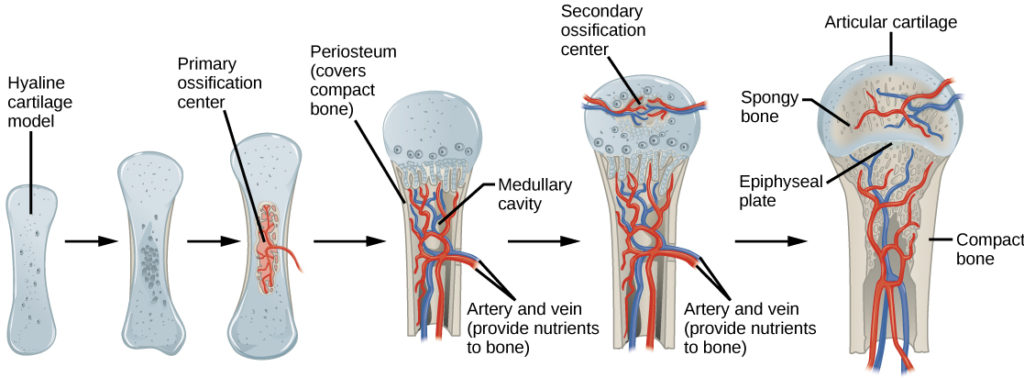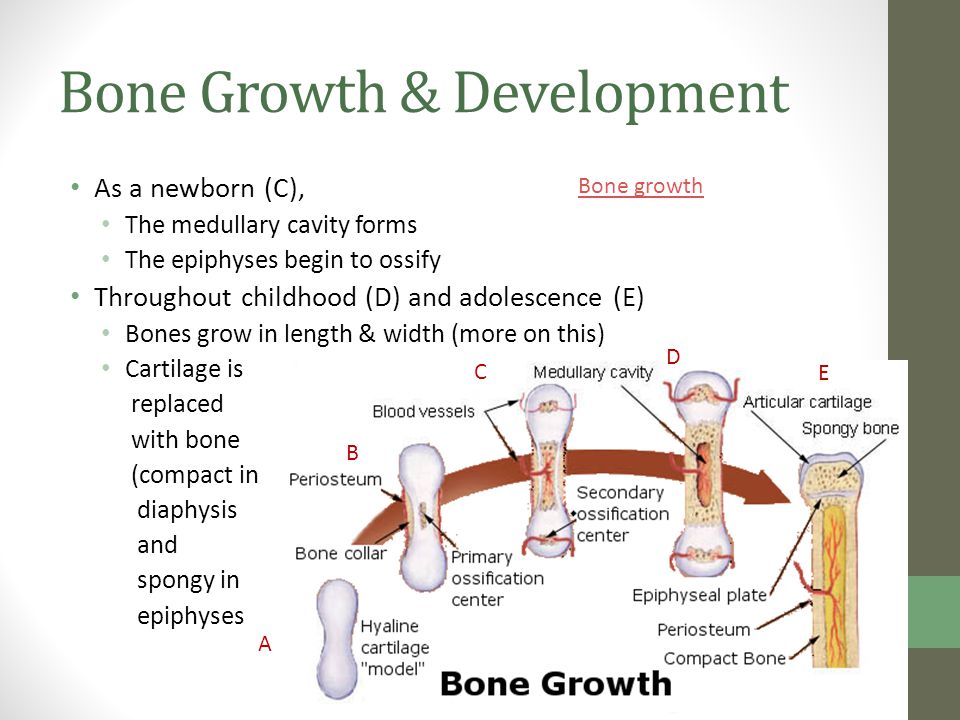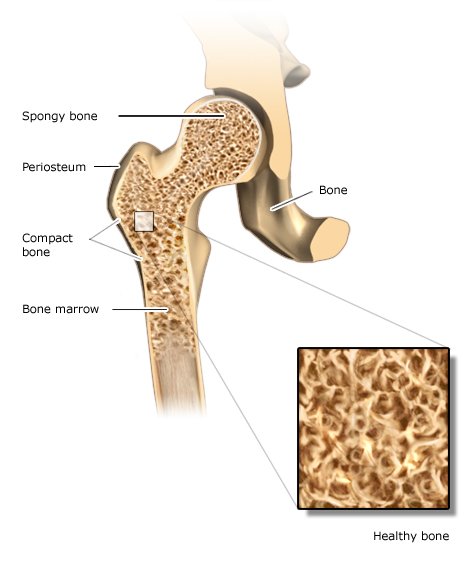However the shape of the head continues to change over the remainder of a persons life. Fortunately for us this doesnt happen in humans.

Bone Growth And Development Biology For Majors Ii
The development of bone from fibrous membranes is called intramembranous ossification.

. Some say the cartilage grows until you die however how could this be true. Because the epiphysis of bone is closed when androgens start to increase at the time of puberty. Youve put 75000 miles on your feet.
By age 50 you may have lost nearly half of the fatty padding on the soles of your. Bones continue to grow in length until early adulthood. Does your nose really keep growing as you age.
All that remains of the epiphyseal plate is the epiphyseal line. Bone growth continues until approximately age 25. Other research indicates that the body continues to grow wider even after the skeleton has stopped growing taller.
So it has been reported that development of large bones is continued up to the age of 18 years. The rate of growth is controlled by hormones which will be discussed later. Bones continue to grow throughout a lifetime.
Sharks skeletal structure is mostly cartilage and they do continue growing throughout their lives. Answer 1 of 55. But this doesnt hold true for all body parts such as the nose which continues to grow in a protruding fashion.
By the time you reach your 50th birthday youve prob-ably also reached another milestone. The misconception that cartilage continues to grow in size throughout our lifetime is mainly attributed to the growth in sharks. Im unaware of specifics of each bone its not a very straightforward question since some bones continue to change as we age and most bones continue to grow until.
The Heart increases its size and its mass through hypertrophy from child to adult but it does not grow new heart cells after birth. Although the head does not get much larger skulls never completely stop changing throughout a persons life. That is why height and weight scale of below 18 years is different from over 18 years of age.
Bones continue to grow throughout a lifetime TRUE 14 Bone recycling allows the from PHY1053 1053 at Pasco-Hernando State College. Section 1205 Bone recycling allows the body to regulate what. According to the University of North Carolina School of Medicine the bones of the pelvis or hip bone continue to grow into old age as well.
As long they dont have a rare hormone imbalance humans basically stop growing at the end of puberty and the onset of adulthood. Usually these bones are sensitive to certain levels of a hormone called testosterone. True Bones are able to respond to stress by changing size shape and strength throughout our lifetime.
As we grow older our facial bones including our eye sockets nose and upper jaw continue to change. The remodeling process occurs throughout life and becomes dominant by the time that bone reaches its peak mass typically by the early 20s. When the chondrocytes in the epiphyseal plate cease their proliferation and bone replaces all the cartilage longitudinal growth stops.
Some peoples enter in to puberty at the age of 131415or 16. Bones generally stop growing in length in your early-to-mid 20s but can change throughout the rest of your life in thickness in response to stress from extra weight or muscle. We checked in with an expert Gregory Levitin MD an otolaryngologist at New York Eye and Ear.
Bones can grow in thickness throughout life but after age 25 ossification functions primarily in bone remodeling and repair. They continue to grow until puberty. There are parts of the body that are fully developed at birth for instance our Eyes.
Remodeling continues throughout life so that most of the adult skeleton is replaced about every 10 years. The average growth between the ages of 20 and 79 was observed to be about 1 inch. A persons bones will not get any longer for example.
Although the head does not get much larger skulls never completely stop changing throughout a persons life. Development from hyaline cartilage is called endochondral ossification. For example our eye sockets enlarge and the angle of the bones beneath our eyebrows decreases.
Bones continue to grow in length until early adulthood. I could be wrong but I. The rate of growth is controlled by hormones which will be discussed later.
The constantly growing cartilage theory states that although bones stop growing the cartilage keeps growing at the end of the bone the growth plate. These bones continue to grow until production of some hormones at puberty. You may reach this milestone much earlier if youve led a foot-active lifestyle.
The time of puberty is individual response. These people say that it is in fact the cartilage that keeps growing. Yes your nose does keep growing as you get up there in years.
When the chondrocytes in the epiphyseal plate cease their proliferation and bone replaces the cartilage longitudinal growth stops. It grows steadily from birth along with the rest of the bones in the body until the development of the skeletal structure is complete. It grows steadily from birth along with the rest of the bones in the body until the development of the skeletal structure is complete.
After the puberty the bones do not grow but remodeling continues throughout life. If youre one of those people and were right there with you with the sinking suspicion that your nose is getting larger we have some unsettling news for you. However the shape of the head continues to change over the remainder of a persons life.
The amount of sodium in the blood the amount of calcium in the blood.

Bone Growth Remodeling And Repair Ck 12 Foundation

How Do Bones Grow Rai Health Awareness Blog

Development Growth And Remodeling Of Bones Ppt Video Online Download

As Our Skin Sags With Age So Do Our Bones Npr

Seer Training Bone Development Growth

Bone Growth And Development Biology For Majors Ii

Both Men And Women Need Strong Bones But Their Skeletons Grow Differently Across Ages

The General Pattern Of Bone Development And Loss Over Time During Download Scientific Diagram

0 Comments